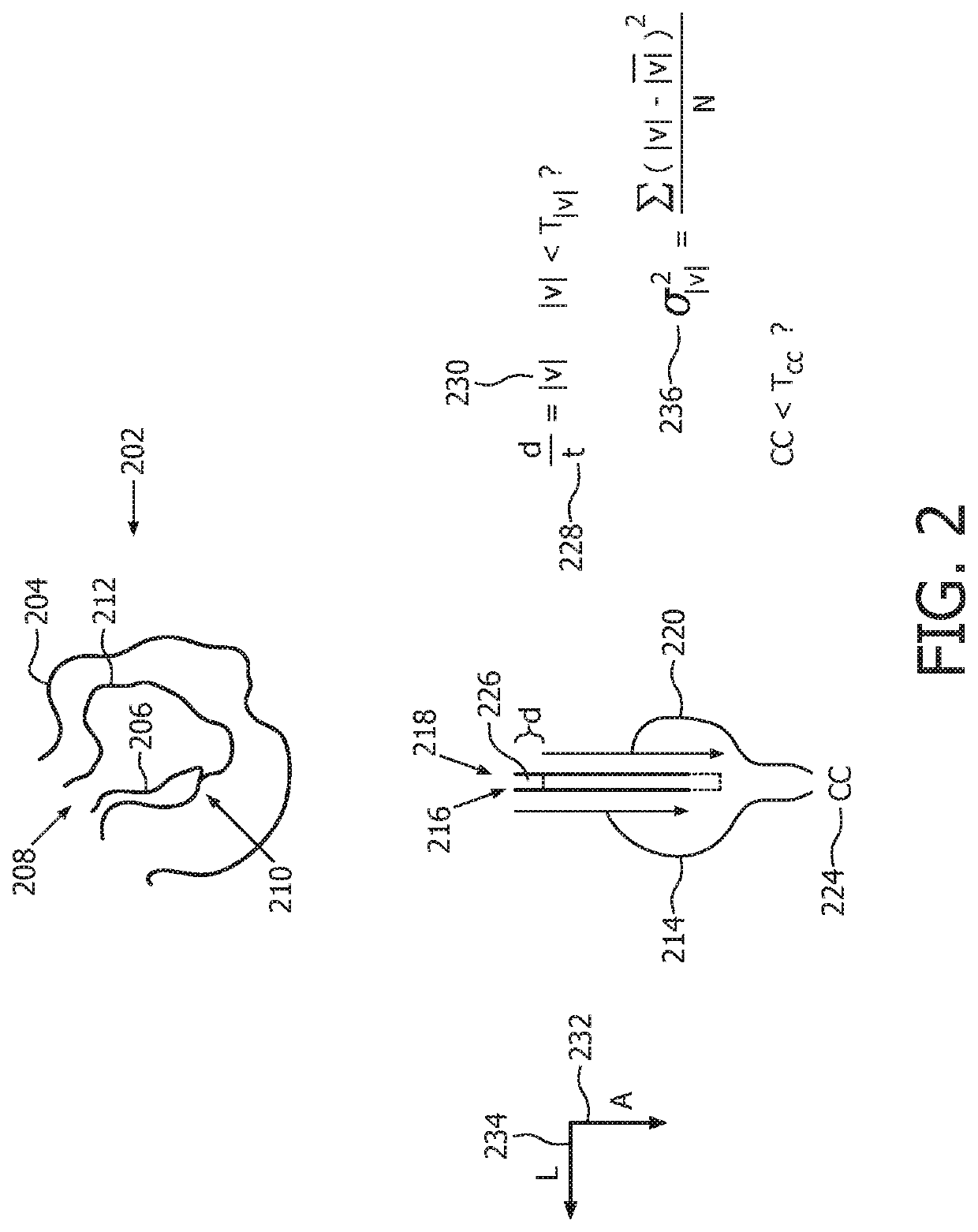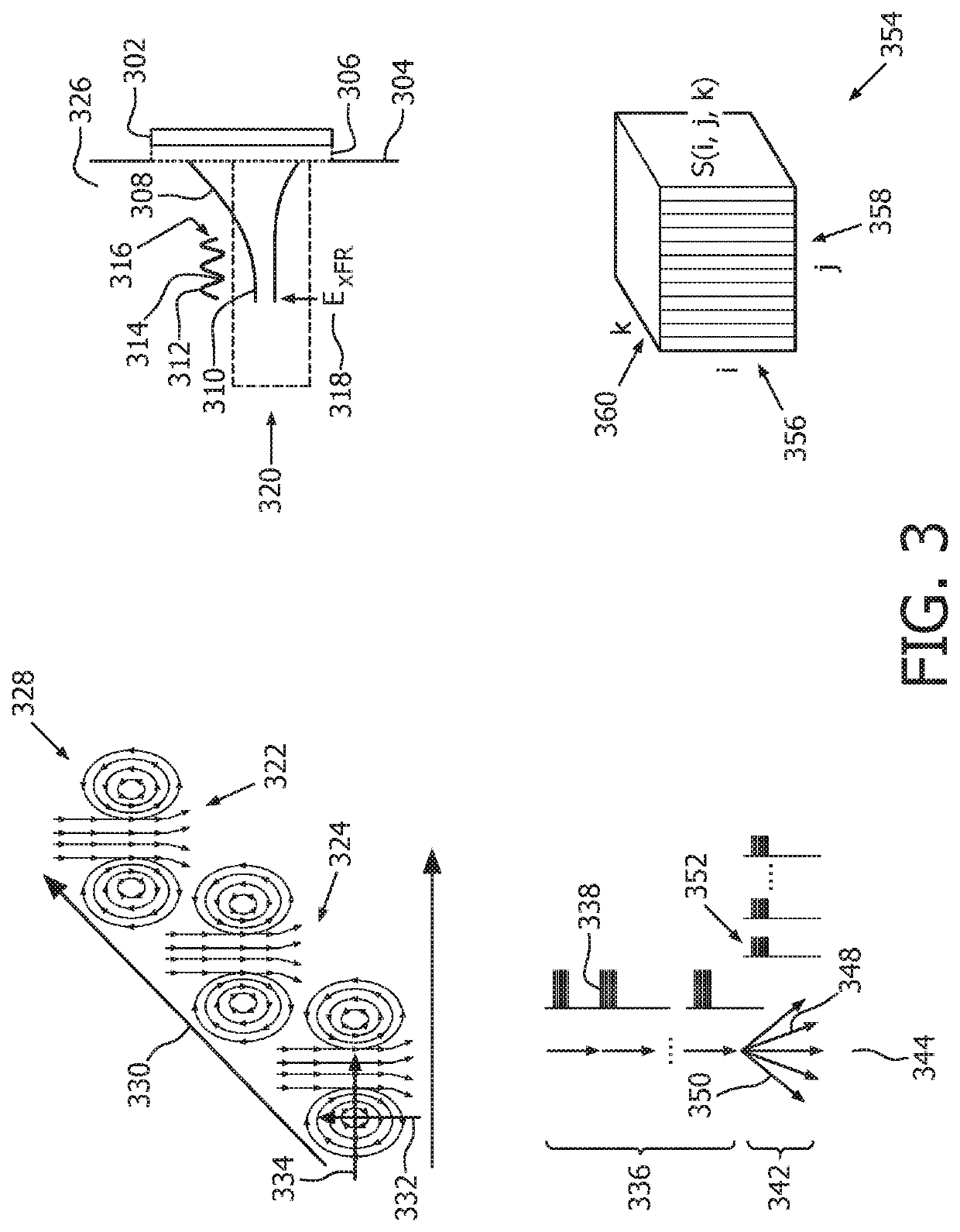Acoustic streaming for fluid pool detection and identification
a technology of fluid pool and acoustic streaming, which is applied in the field of detecting fluids, can solve the problems of traumatic death, impractical use of ct/mri for monitoring dynamic processes, and significant social and economic costs of public health, and achieves the effects of reducing the field of search for blood pools, reducing the cost of total power expenditure, and fast, safe and convenient imaging modality
- Summary
- Abstract
- Description
- Claims
- Application Information
AI Technical Summary
Benefits of technology
Problems solved by technology
Method used
Image
Examples
Embodiment Construction
[0037]FIG. 1 depicts, by way of illustrative and non-limitative example, an acoustic-streaming-based liquid, and blood pool, detection and localization apparatus 100. The apparatus 100 includes an ultrasound image acquisition system 110, an ultrasound image analysis system 120, and a user interface 130.
[0038]Included in the ultrasound image acquisition system 110 are an ultrasound imaging probe 140, a remote ultrasound imaging probe 142 and / or a remote ultrasound-reflector 144, and an ultrasound beamformer 150. The imaging probe 140 incorporates at least one ultrasound transducer (not shown). The transducer is configured for conventional ultrasound imaging modes, e.g., A-mode, two-dimensional (or “B-mode”) imaging, Doppler, contrast imaging, color flow imaging, etc. It is further configured for producing, i.e., forming and emitting, acoustic-radiation-force-based push pulses for acoustic streaming. Alternatively, separate transducers may be provided. For example, one can be designed...
PUM
 Login to View More
Login to View More Abstract
Description
Claims
Application Information
 Login to View More
Login to View More - R&D
- Intellectual Property
- Life Sciences
- Materials
- Tech Scout
- Unparalleled Data Quality
- Higher Quality Content
- 60% Fewer Hallucinations
Browse by: Latest US Patents, China's latest patents, Technical Efficacy Thesaurus, Application Domain, Technology Topic, Popular Technical Reports.
© 2025 PatSnap. All rights reserved.Legal|Privacy policy|Modern Slavery Act Transparency Statement|Sitemap|About US| Contact US: help@patsnap.com



